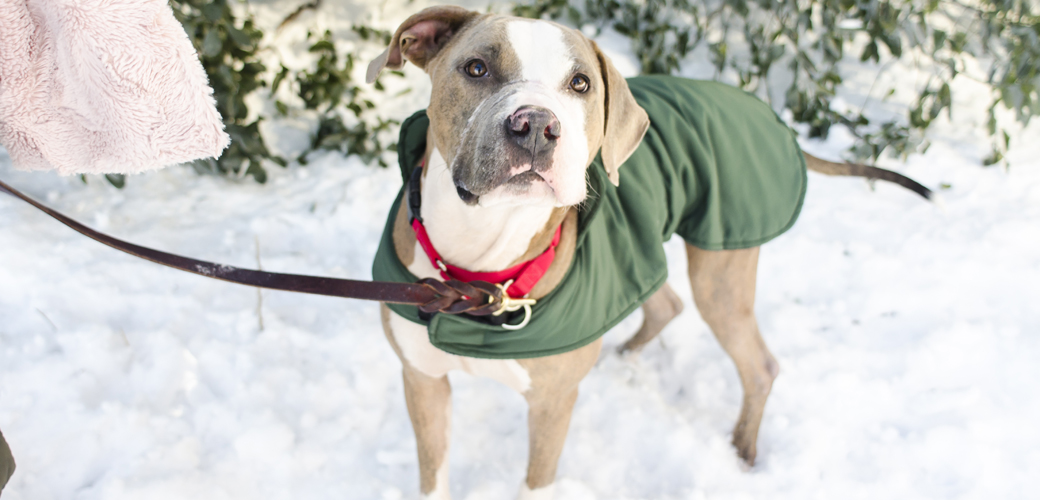Your pup may be excited to be able to play in the snow again, but with “the fun white stuff”, comes cold temperatures and even Polar Vortex conditions! We know you and your dog are eager to get out there and have some fun, but how cold is too cold for your pet?
Does your dog have a thick coat?
It’s impossible to answer this question without first considering your dog’s coat. Some dogs, like Huskies or Malamutes have thick coats that help keep them warmer, while other breeds such as Chihuahuas and Greyhounds have very thin coats and will get cold much more quickly. Even dogs with thick coats can get cold when the temperatures drop or if they’re outside for extended periods of time. For this reason, it is important to always keep an eye on your dog and bring it inside whenever it’s showing signs of being cold.
Does your dog need a coat or sweater?
While most dogs will be fine to go outside for short periods of time, it’s important to consider their natural ability to keep warm. Do they have thin or short hair? Do they have a lean body (such as a Greyhound)? Is your dog still a puppy? Is your dog a senior? All these things need to be taken into consideration to determine if your dog is going to need a coat or a sweater. Puppies, older dogs, and dogs with thin coats or lean bodies will generally need a coat or sweater to stay warm in the winter. Even if you think your dog will be fine, however, pay close attention to its comfort level and consider getting it a coat or sweater if it shows signs of getting cold quickly.
Does your dog need boots?
Cold sidewalks, particularly stone walkways, can get very cold during the winter and be uncomfortable for your dog to walk on. While your dog’s paws should be okay for short periods, you do need to watch for extreme temperatures, such as those during a Polar Vortex. Additionally, some de-icers can actually burn your dog’s paws and even poison it if ingested! While pet-friendly de-icers exist, we know you often don’t have control over what may be used in your community. In cases where there is a concern about the safety of de-icers being used, or temperatures are particularly frigid, boots may be a good idea.
How cold is too cold?
Just like us, dogs get cold too. While temperatures above 45F are generally okay for most dogs, you still need to pay attention to determine if your dog is comfortable. Signs of being cold, such as shivering, whining, or acting anxious, are important indicators that it’s just too cold for your pet.
Below 45F, cold-averse dog breeds, such as Greyhounds and Whippets, will generally start to get cold. These breeds are very sensitive to cold and often need coats or sweaters during colder weather.
Below 32F, small or thin-haired breeds, puppies, and senior dogs are likely going to need a sweater or coat to stay warm.
Below 20F, your dog is very likely to be cold, and it’s very important for all dog owners to be watchful for signs that your dog is uncomfortable or wants to go inside. It’s also extremely important to limit time outside for your dog’s own safety.
While every dog and dog breed is different, these guidelines should help you determine what temperatures may be unsafe for your dog. Always pay close attention to your dog when it’s outside, and bring it inside if it is ever showing signs of being cold or uncomfortable.
We hope this helps, and we hope you and your furry friends have a wonderful winter season!
About Disaster Blaster
Disaster Blaster is an indoor environmental firm serving the Northeastern PA Area. We have been providing our local area with unparalleled water damage mitigation, mold remediation, radon mitigation, asbestos abatement, basement waterproofing, and fire / smoke restoration services for decades, and are proud to have been named The World’s Greatest Indoor Environmental Firm. For more about Disaster Blaster, as well as more helpful tips, please visit our website at: www.disasterblaster.com or call our office at (570) 963-1123.
Published in Connections Magazine December 2019 Issue. Copyright 2019.


